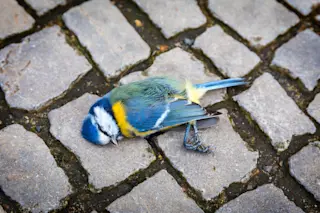Window collisions kill up to a billion birds each year — that’s billion with a “b.” We’ve known about this for decades, and these casualties far outnumber birds poisoned by pollution, hit by cars or other direct causes. The only worse offender is domestic cats, who are estimated to kill somewhere between 1.3 and 4 billion birds annually.
Deaths-by-window peak during migration season, when billions of birds take to the skies at night with their sights set on a destination far away. Within recent years, researchers and conservation groups are getting innovative, using tools like radar to figure out new ways to keep these birds flying safely on their way.
Birds, of course, don’t mean to fly into buildings. It’s the reflectivity of the windows that tricks them — they don’t perceive shiny glass as a solid surface. The mirrored windows seen on skyscrapers look especially like an open sky. ...














